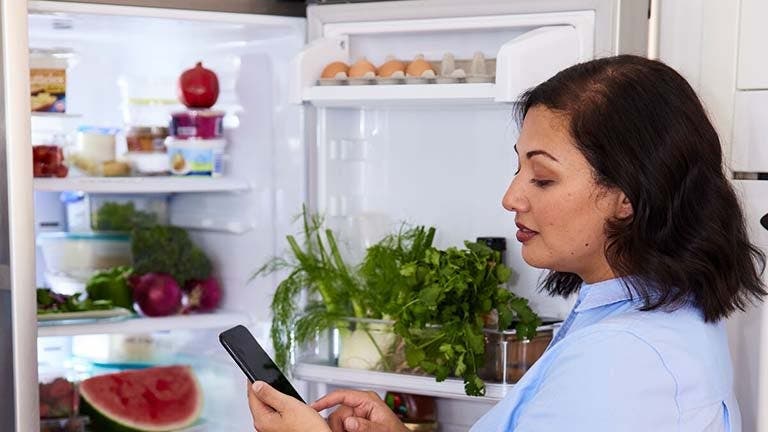How to organise your fridge


Believe it or not, there is a science to organising your fridge. Get it right and food will stay fresher for longer and be much easier to find!
Scroll to find out what should live where, from the top shelf to the fridge door, and for some quick-fire bonus tips.
Top shelf
The upper shelves are the warmest part of the fridge (along with the door). It's the ideal location for storing batch-cooked dinners, leftovers, juices, condiments and foods that don’t require cooking.
The top shelf is also useful for storing dairy products, such as cheese, butter, milk, eggs, tofu, and yoghurt. Keep these foods covered - plastic containers are best - as they absorb odours easily. Eggs are best stored in the carton they're sold in.
Top tip: Write the date you open tubs of yoghurt, sour cream or soft cheese on the lid and consume within the recommended period.
Middle shelf
The middle shelf is best for deli meat, cooked food, and leftovers. Store pre-sliced meat like ham and chicken towards the back (the coldest part of the fridge) until the use-by date, and follow the instructions on the pack once they've been opened. Place cooled leftovers in the fridge within one hour of cooking (or bacteria will multiply).
Top tip: Divide large amounts of leftover food into smaller portions for faster cooling. Then, position them at the front of the shelf in clear plastic containers or plates covered with clingfilm so you remember to eat them.
Bottom shelf
The bottom shelf is where raw meat and seafood should stay until you're ready to cook it. Use a plate or leak-proof container to prevent drips and cross-contamination, and push towards the back of the shelf where it's colder.
Top tip: It's best to defrost meat, chicken, seafood and leftovers in the fridge rather than leaving them out on the side.
Salad drawers
The reason you have separate drawers is because some fruits give off a gas called ethylene that can speed up ripening and therefore spoilage in certain fruits and veggies. To stop leafy greens and root vegetables from becoming limp, store them in loose or perforated plastic bags.
Some salad drawers have an adjustable vent to control air flow. Closing the vent increases humidity and stops ethylene getting in.
Top tip: It's best to avoid storing very ripe fruit with other fruit, unless you want it to ripen faster.
In the fridge door
The door is one of the warmest parts of the fridge. The narrow shelves make them ideal for storing taller bottles, cartons and jars, including condiments and juices.
Some bottles and jars don’t need to be kept in the fridge until they've been opened, such as jam and some Asian sauces.
Top tip: Some sauces are best kept in cupboards rather than the fridge. Check the instructions on the packaging to be sure, and if in doubt, pop in the fridge.
In plain sight
To make staying on track as easy as possible, try positioning low-Point food and snacks towards the front of the fridge, and at eye level.
If things like hard-boiled eggs, fat-free yogurt, fresh fruit or veggies are the first thing you see - and convenient to munch on - you're more likely to choose them over higher-in-Points alternatives.
Quick-fire tips!
- Every once in a while, take everything out and clean the shelves and crisper drawers with warm, soapy water.
- The ideal fridge temperature is between 3-5°C. This slows the growth of bacteria and ensures everything stays fresher for longer.
- Avoid overcrowding your fridge as it will have to work harder to maintain a safe temperature.
- Conduct regular fridge ‘audits’ to discard anything past its use-by date.
